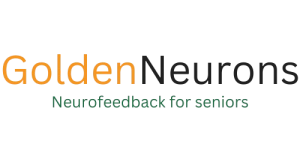In this blog, we will explore the profound impact of trauma on the brain and introduce neurofeedback as a potential solution. We will delve into the science behind neurofeedback, explain how it works, and highlight its benefits. Additionally, we will share insights from experts and provide guidance on how to get started with neurofeedback therapy.
Definition of Trauma
Understanding Trauma and Its Effects on the Brain
Trauma is an emotional response to a deeply distressing or disturbing event that overwhelms an individual’s ability to cope, causes feelings of helplessness, diminishes their sense of self, and limits their ability to feel a full range of emotions and experiences. Trauma can take various forms, including:
Post-Traumatic Stress Disorder (PTSD)
A condition triggered by experiencing or witnessing a terrifying event, characterized by severe anxiety, flashbacks, and uncontrollable thoughts about the event.
Emotional Trauma
Resulting from situations such as verbal abuse, neglect, or significant emotional manipulation.
Physical Trauma
Caused by physical injuries or assaults.
Common sources of trauma include:
Accidents
Such as car crashes or workplace injuries.
Accidents
Physical, emotional, or sexual abuse.
Combat Experiences
Veterans often face trauma from their time in combat zones.
Impact of Trauma on the Brain:
Trauma significantly affects brain function and structure. Key areas impacted by trauma include:
- Amygdala: The brain’s fear center becomes hyperactive, leading to heightened anxiety and fear responses.
- Hippocampus: Responsible for memory and learning, trauma can shrink this area, affecting the ability to form new memories and process emotions.
- Prefrontal Cortex: This region, which governs decision-making and impulse control, can become underactive, leading to difficulties in emotional regulation and executive functioning.
Symptoms of a Traumatized Brain:
The impact of trauma manifests in various symptoms, including:
- Flashbacks: Vivid, intrusive memories of the traumatic event.
- Anxiety: Constant worry, panic attacks, and heightened startle responses.
- Depression: Persistent sadness, hopelessness, and lack of interest in activities.
- Hypervigilance: Being overly alert and on edge, always expecting danger.
Understanding these effects and symptoms is crucial for recognizing the profound impact trauma has on individuals and underscores the need for effective treatments like neurofeedback.
What is Neurofeedback?
Symptoms of a Traumatized Brain:
Neurofeedback is a type of biofeedback that focuses on helping individuals learn to regulate their brain activity. It is a non-invasive therapeutic technique that provides real-time feedback from brainwave activity to teach self-regulation of brain function. The origins of neurofeedback can be traced back to the 1960s when researchers like Dr. Joe Kamiya and Dr. Barry Sterman began exploring the possibility of using EEG (electroencephalogram) feedback to alter brain activity. Initially, it was used for training astronauts and treating epilepsy, but over time, its applications expanded to address various mental health conditions, including trauma.
How Neurofeedback Works:
Neurofeedback operates on the basic principle of monitoring brain activity and providing feedback that helps the individual learn to self-regulate their brainwaves. Here’s how a typical neurofeedback session works:
Monitoring Brainwaves
Sensors are attached to the scalp to detect brainwave activity. This information is relayed to a computer for analysis.
Providing Feedback
The computer software provides real-time feedback through visual or auditory signals. This feedback helps individuals become aware of their brainwave activity.
Reinforcing Positive Changes
Individuals learn to adjust their brainwave patterns through feedback, with repeated sessions helping the brain achieve a more balanced state.
Scientific Basis of Neurofeedback:
The neuroscience behind neurofeedback is rooted in the concept of neuroplasticity, which is the brain’s ability to reorganize itself by forming new neural connections. Neurofeedback leverages this ability by training the brain to produce healthier brainwave patterns. Several studies and clinical trials have demonstrated the effectiveness of neurofeedback in treating trauma and related conditions. For instance, research has shown that neurofeedback can reduce symptoms of PTSD, anxiety, and depression by helping the brain to regulate its activity and enhance its resilience.
Benefits of Neurofeedback for Trauma
Regulation of Brain Activity:
Improvement in Symptoms:
Many individuals undergoing neurofeedback therapy report significant improvements in their symptoms. Common benefits include:
- Reduced Anxiety: Neurofeedback helps decrease the intensity and frequency of anxiety episodes.
- Better Sleep: Improved brainwave regulation can lead to better sleep patterns, which is often disrupted in trauma patients.
- Improved Mood: By enhancing emotional regulation, neurofeedback can help lift mood and reduce symptoms of depression.
Long-term Benefits:
Expert Opinions
Quotes from Professionals:
A renowned trauma researcher and author: "Neurofeedback gives patients information about how their brains function, allowing them to change their brain patterns and take control of their symptoms."
A neurofeedback practitioner and author: "Neurofeedback empowers individuals by allowing them to become aware of and alter their brain activity, leading to profound changes in their mental and emotional well-being."
A neuroscientist specializing in trauma: "Neurofeedback provides a powerful tool for helping patients with PTSD and other trauma-related disorders by targeting the neural circuits involved in fear and stress."
Supporting Research:
Several studies and clinical trials have demonstrated the efficacy of neurofeedback for trauma:
-
- A 2016 study published in the journal NeuroRegulation: This study found that neurofeedback significantly reduced PTSD symptoms in military veterans, with improvements in anxiety, depression, and overall quality of life.
-
- A 2013 meta-analysis published in the journal Applied Psychophysiology and Biofeedback: This analysis reviewed multiple studies and concluded that neurofeedback is an effective treatment for PTSD, showing substantial symptom reduction and long-term benefits.
-
- Research by Dr. Eugene Peniston: His work with alcoholics and PTSD patients demonstrated significant reductions in anxiety, depression, and hyperarousal symptoms through neurofeedback, supporting its use as a therapeutic tool.
Getting Started with Neurofeedback
What to Expect:
Initial Consultation
The practitioner will discuss your symptoms, medical history, and therapy goals.
Brain Mapping (QEEG)
A quantitative electroencephalogram (QEEG) may be conducted to map your brain activity and identify areas that need regulation.
Treatment Plan
Based on the assessment, a personalized treatment plan will be created, outlining the frequency and duration of sessions.
A typical neurofeedback session includes:
-
- Duration: Sessions usually last 20-43 minutes.
-
- Frequency: Most treatment plans recommend 4 sessions per week.
-
- Timeline: Treatment duration varies but typically involves 20-40 sessions for significant improvement.
Conclusion
Neurofeedback offers a promising approach to healing the traumatized brain by helping to regulate brain activity, reduce symptoms, and promote long-term changes through neuroplasticity. It provides a non-invasive and personalized treatment option with substantial scientific backing and expert support.
If you’re struggling with PTSD and are looking for a safe, effective, and natural solution, consider neurofeedback therapy. This innovative approach can help you achieve a more balanced and relaxed state of mind. Contact NeuroClinic Jerusalem today to learn more about how neurofeedback can transform your mental health and help you regain control of your life.
Take the first step towards managing your anxiety naturally. With NeuroClinic Jerusalem and discover the benefits of neurofeedback therapy for PTSD. Our experienced team is here to guide you through the process and help you achieve lasting mental well-being. Visit our website or call us today to get started on your journey to a calmer, more balanced life.



